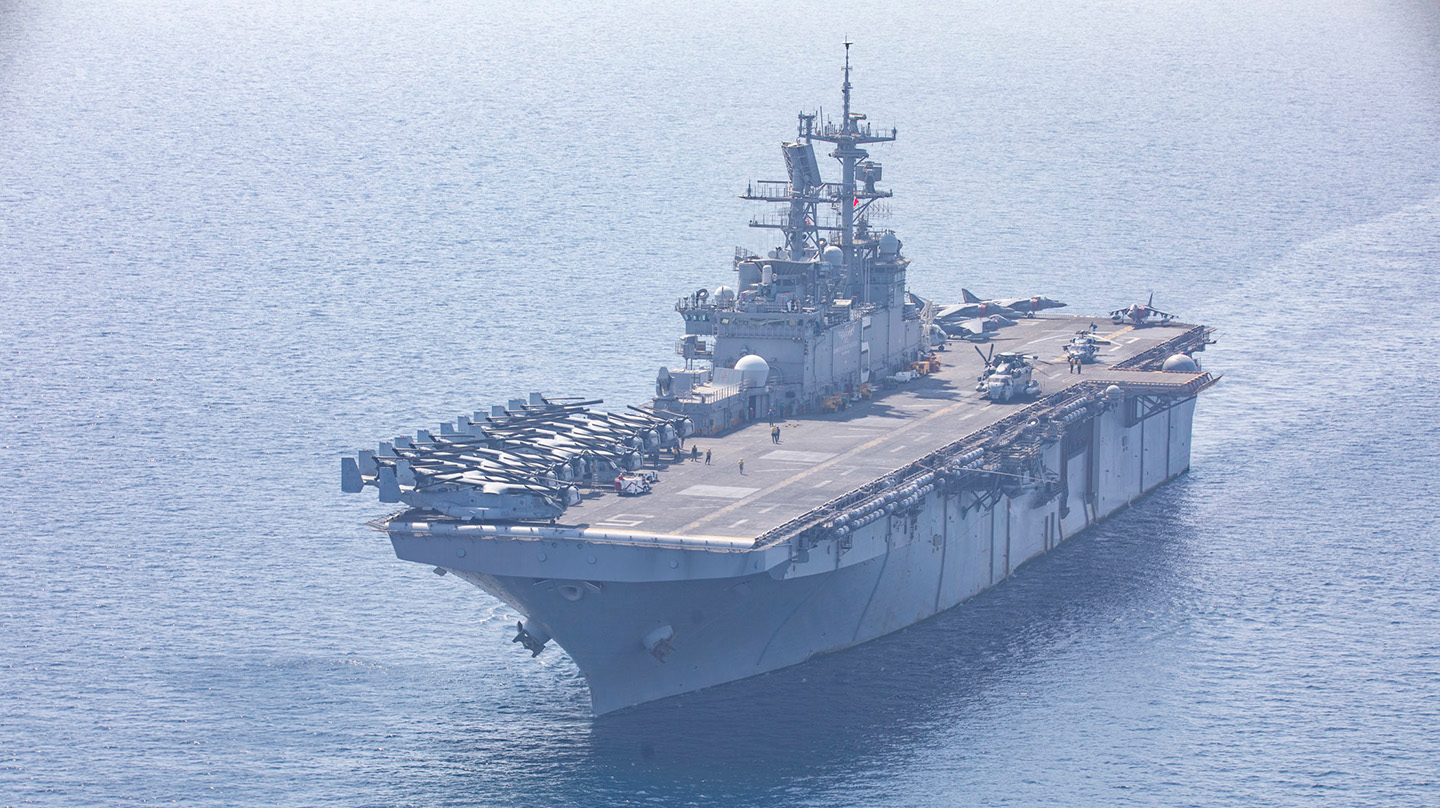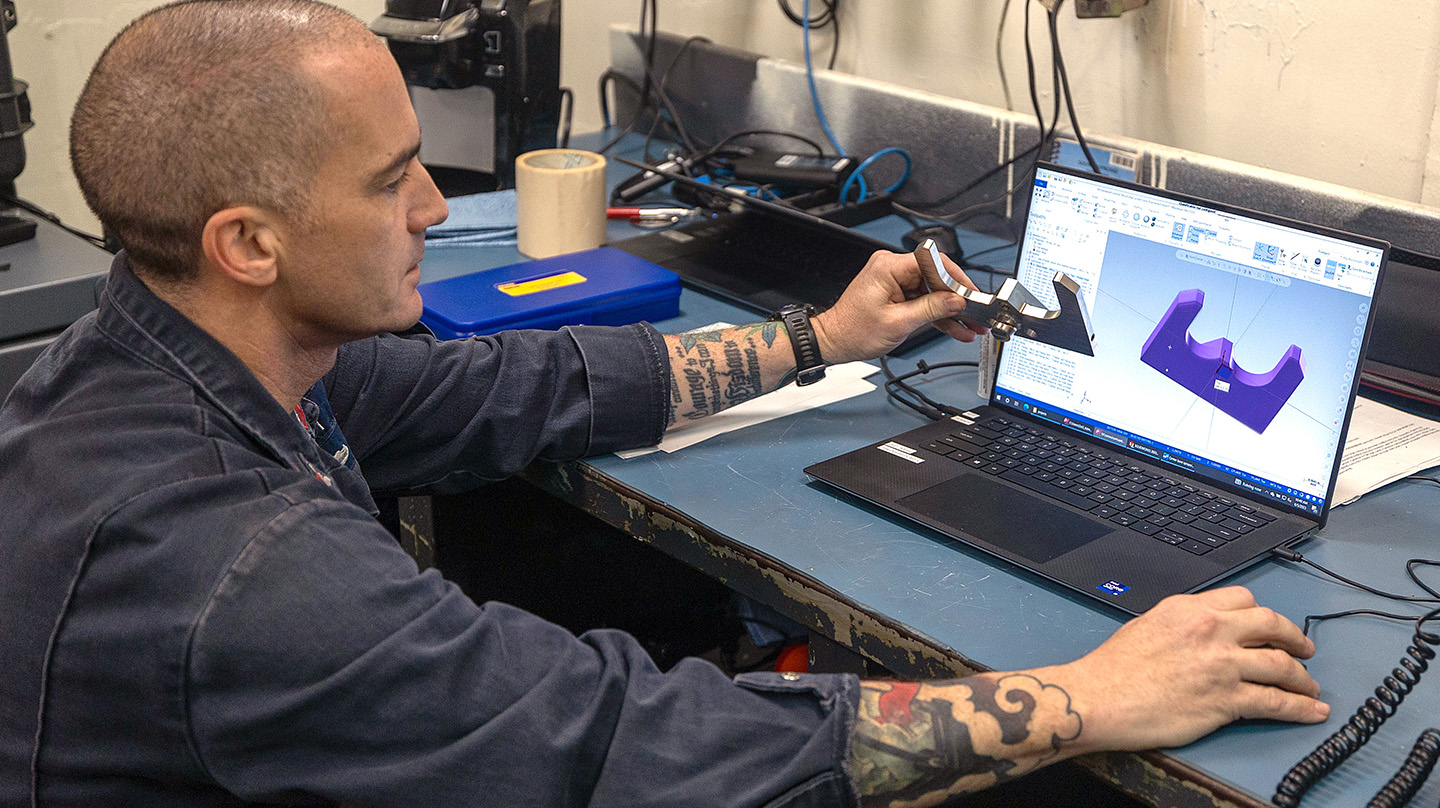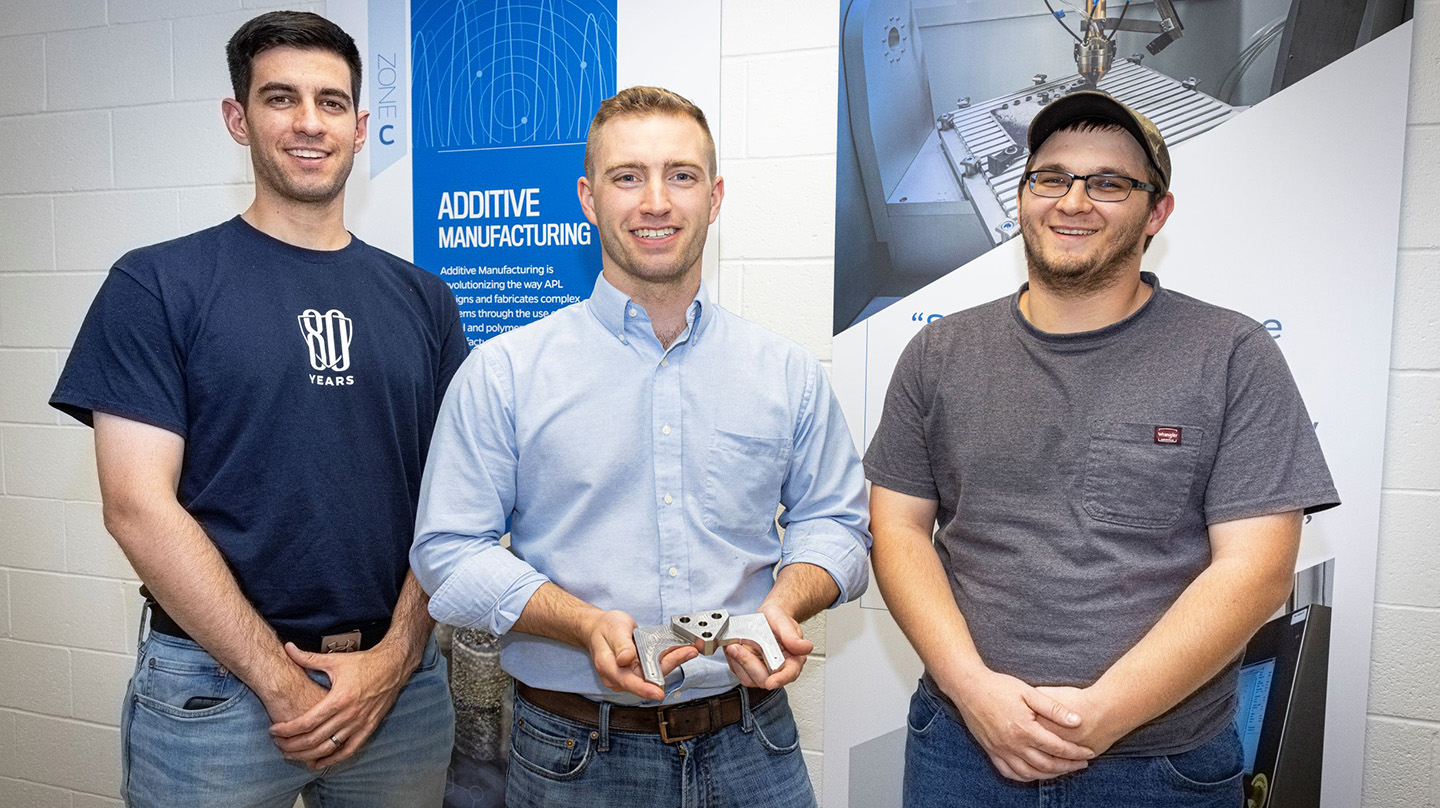The hybrid manufacturing system, which APL installed in October 2022, features both Directed Energy Deposition 3D-printing additive as well as traditional subtractive manufacturing capabilities, such as milling and drilling. When the sprayer plate on the ship broke and there weren’t any spares available, sailors reached out to NAVSEA and APL to see whether the part could be manufactured onboard using the newly installed printer.
“Neither NAVSEA nor APL had the technical data package, which is a set of instructions for the printer to produce a specific part, for the sprayer plate developed yet,” said Craig Hughes, the assistant program manager for Expeditionary Logistics in APL’s Force Projection Sector (FPS). “The sailors on the ship used CAD [computer-aided design] software to produce a digital model of the part that was then sent to us here at APL using the secure Digital Manufacturing Environment, and our machinist used that file to test and refine the part’s production.”
“APL is uniquely positioned to respond to this challenge because of the breadth of expertise at the Lab,” said Ed Chapman, the assistant manager of the Maritime Expeditionary Warfare Program Area in FPS. “Where our Sea Control Mission Area excels at understanding the Navy’s needs and developing solutions to address those needs, our teammates in the Research and Exploratory Development Department have the deep technical knowledge necessary to make those solutions a reality. This achievement is a culmination of years of teamwork.”
APL’s campus in Laurel, Maryland, is home to an identical printing system. Using that system, senior mechanical fabrication technician Hunter Turco and Drew Seker, an APL mechanical engineer and project manager, worked in close coordination with Bryan Kessel, a mechanical engineer in NAVSEA’s Naval Surface Warfare Center, Carderock Division, to produce the part using only the tools that were available to the sailors aboard the ship.
“There were several holes that we had to drill within the part, and drilling in stainless steel isn’t easy,” said Turco. “The tooling that they had on the ship wasn’t optimal for the situation, but because we knew exactly what we put on the ship and we knew what they had available, we were able to test it here. We developed the CAM [computer-aided manufacturing] files at APL, finessed the tooling and programming, and used the Digital Manufacturing Environment to share those instructions with the machinists onboard so they could produce it themselves. We stayed in communication with them throughout the process to ensure the part was properly manufactured.”



